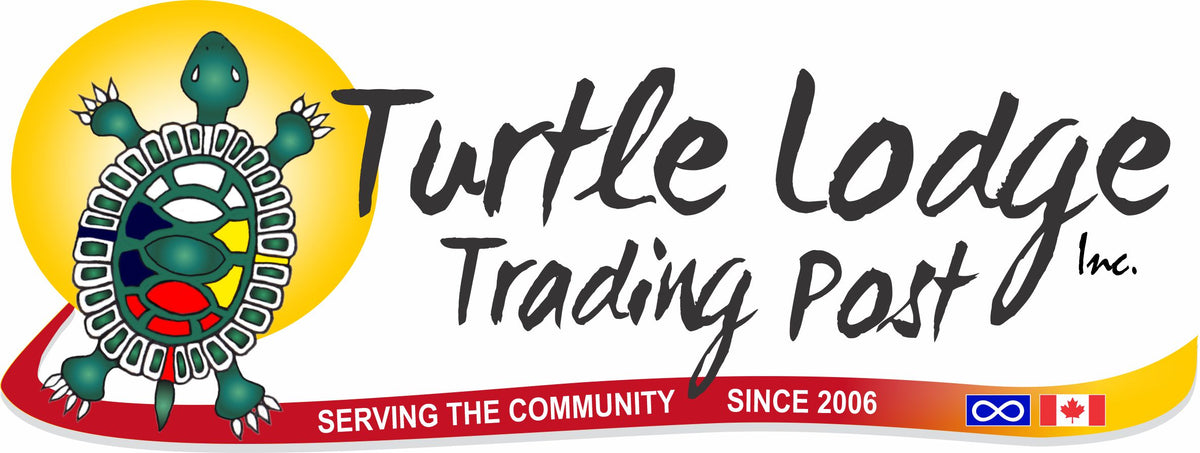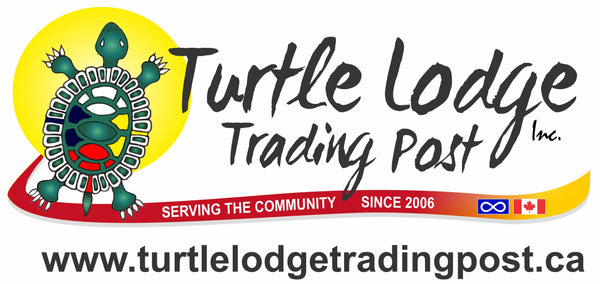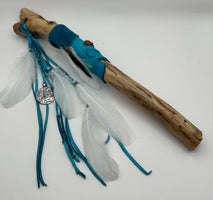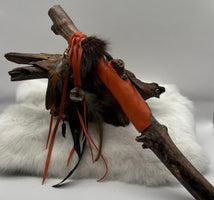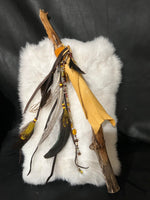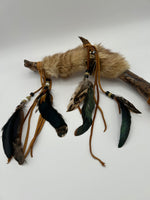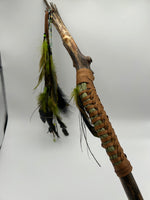Talking Sticks
Unique Indigenous-made talking sticks handcrafted with recycled wood, treated with water-based products, and beautifully decorated with symbolic ornaments including leather, natural feathers, glass, and bone beads as well as small charms.
General Guidelines
The Talking stick, used in many Indigenous cultures, is an ancient and powerful “communication tool” that ensures a code of conduct of respect during gatherings is followed. The person holding the stick, and only that person, is designated as having the right to speak and all others must listen quietly and respectfully. Talking sticks are most frequently used in council circles, ceremonies, and at the beginning of cultural events such as potlatches and in storytelling circles. Some cultures do not use a Talking Stick per se but use an Eagle feather, Wampum Belt, Sacred Pipe, or other sacred items from the community. In terms of First Nation Talking Stick protocols, it is important to remember each First Nation is unique in their culture, traditions and history so will have their own protocols.
We offer some general guidelines to assist you:
- If an Elder is present, they speak first
- All in attendance are expected to listen
- Listen with respect, support, compassion, and quietness
- Listen carefully - do not repeat information that has already been shared
- Interrupting is not allowed
- When the Elder, or whomever, is holding the talking stick has finished speaking, the stick is handed to the next person in the circle
- If the receiver does not wish to speak, it is passed to the next person and the person is not judged for not speaking
- If you are handed the Talking Stick and wish to speak, introduce yourself first
- When everyone who wishes to speak has spoken, the Talking Stick is handed back to the Elder for safekeeping
- Turn off your phone.
